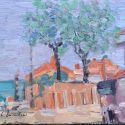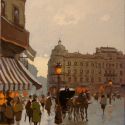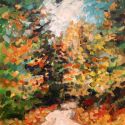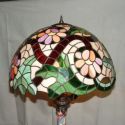Born on 26 September 1791: Jean Louis André Théodore Géricault, French Romantic painter who died on 26 January 1824.
Géricault exerted a seminal influence on the development of Romantic art in France. Géricault was a fashionable dandy and an avid horseman whose dramatic paintings reflect his colorful, energetic and somewhat morbid personality. Géricault was perhaps the most influential artist of his time and a seminal figure of the 19th-century romantic movement in art.
Géricault, born into a wealthy Rouen family, studied under the French painters Carle Vernet and Pierre Guérin {chez qui, étant un ardent cavalier, il essayait de convaincre un autre apprenti, Victor Orsel [25 May 1795 – 01 Nov 1850] , d'être Ancel} and also went to Italy to study from 1816 to 1817. He was greatly influenced by the work of Michelangelo and other Italian Renaissance painters, as well as that of the Flemish master Peter Paul Rubens. Early in his career, Géricault's paintings began to exhibit qualities that set him apart from such neoclassical French painters as Jacques-Louis David.
Géricault soon became the acknowledged leader of the French romantics. His Charging Chasseur (1812) and Wounded Cuirassier (1814) display violent action, bold design and dramatic color, and evoke powerful emotion. These characteristics appeared in heightened form in his immense and overpowering canvas Raft of the Medusa (1819), showing the dying survivors of a contemporary shipwreck. The painting's disturbing combination of idealized figures and realistically depicted agony, as well as its gigantic size and graphic detail, aroused a storm of controversy between neoclassical and romantic artists. Its depiction of a politically volatile scandal (the wreck was due to government mismanagement) also caused controversy.
In 1820 Géricault traveled to England, where he painted his Race for the Derby at Epsom. At the time of his death, Géricault was engaged in painting a series of portraits of mental patients that demonstrate the preoccupation of the romantic artists with derangement and neurosis. Among his other works are a number of bronze statuettes, a superb series of lithographs and hundreds of drawings and color sketches.
— Théodore Géricault grew up in the turbulent years of the French Revolution and Napoleon's reign. He studied with several fashionable artists, but the strongest impact on his work, aside from Goya, came from the influence of baron Jean-Antoine Gros [1771-1835] who had studied under David and who was a fundamental link between David and the new generation of French painters of the early nineteenth century. From Gros's canvases, especially those which make Napoléon the center of an emotional, almost mystical, glorification; Géricault drew much inspiration both for Romantic interpretation and for styles.
Géricault, like Gros, Goya, and other artists, was interested in painting contemporary, topical events, not only as a depiction of that particular event, but also as an exploration of the passionate emotions and truths that underlay it. Often Géricault's searches yielded dark and previously unknown images. Fascinated by violence and horror, he made a series of bloodcurdling paintings of the decapitated heads of criminals. These he studied not in the scientific manner of a Leonardo da Vinci eager to learn the secrets of the human form, but for the awful nature of suffering and violent death, something he himself courted by riding dangerous horses and by a failed attempt at suicide.
That Géricault found the irrational compelling is confirmed by another disturbing series, this time of mad men and women. Whereas Goya had portrayed the hallucinations to which a madman might be prone, Géricault intensively studied the faces of those who were actually insane. The fact that these disturbed and frightening creatures were now considered, like the severed heads, worth subjects for painting demonstrates a fundamental shift in the concept of what art was supposed to depict.
It is impossible to conceive of David, the great Neo-classicist, painting such gruesome and, in the traditional view, such uninspiring and degrading subjects. Among the most remarkable paintings of Géricault's short and tempestuous life, these images explore various forms of madness. Beautifully painted, some of them reminiscent of the insightful portraits by the mature Rembrandt, the likenesses are both terrifying and pathetic. These are memorable likenesses - painted with a sober, tempered palette and a spontaneous, free, heavily loaded brush. These works have never been surpassed for their incisive exploration of the madness that Géricault thought of not as a sort of extraneous invasion of the soul but as something intrinsic to the human mind.
inchide 
Newsletter
Stay tuned with arts. Subscribe to Artline art news send directly to your mailbox by artLine.ro

































